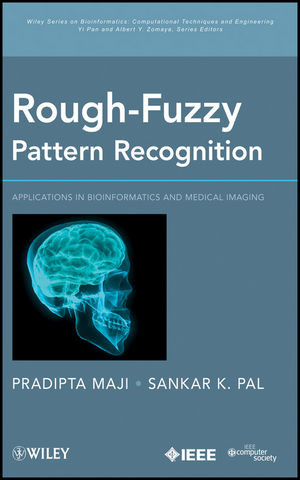

Most ebook files are in PDF format, so you can easily read them using various software such as Foxit Reader or directly on the Google Chrome browser.
Some ebook files are released by publishers in other formats such as .awz, .mobi, .epub, .fb2, etc. You may need to install specific software to read these formats on mobile/PC, such as Calibre.
Please read the tutorial at this link: https://ebookbell.com/faq
We offer FREE conversion to the popular formats you request; however, this may take some time. Therefore, right after payment, please email us, and we will try to provide the service as quickly as possible.
For some exceptional file formats or broken links (if any), please refrain from opening any disputes. Instead, email us first, and we will try to assist within a maximum of 6 hours.
EbookBell Team

0.0
0 reviewsEmphasizing applications in bioinformatics and medical image processing, this text offers a clear framework that enables readers to take advantage of the latest rough-fuzzy computing techniques to build working pattern recognition models. The authors explain step by step how to integrate rough sets with fuzzy sets in order to best manage the uncertainties in mining large data sets. Chapters are logically organized according to the major phases of pattern recognition systems development, making it easier to master such tasks as classification, clustering, and feature selection.
Rough-Fuzzy Pattern Recognition examines the important underlying theory as well as algorithms and applications, helping readers see the connections between theory and practice. The first chapter provides an introduction to pattern recognition and data mining, including the key challenges of working with high-dimensional, real-life data sets. Next, the authors explore such topics and issues as:
Soft computing in pattern recognition and data mining
A Mathematical framework for generalized rough sets, incorporating the concept of fuzziness in defining the granules as well as the set
Selection of non-redundant and relevant features of real-valued data sets
Selection of the minimum set of basis strings with maximum information for amino acid sequence analysis
Segmentation of brain MR images for visualization of human tissues
Numerous examples and case studies help readers better understand how pattern recognition models are developed and used in practice. This text—covering the latest findings as well as directions for future research—is recommended for both students and practitioners working in systems design, pattern recognition, image analysis, data mining, bioinformatics, soft computing, and computational intelligence.Content:
Chapter 1 Introduction to Pattern Recognition and Data Mining (pages 1–20):
Chapter 2 Rough?Fuzzy Hybridization and Granular Computing (pages 21–45):
Chapter 3 Rough?Fuzzy Clustering: Generalized cA?Means Algorithm (pages 47–83):
Chapter 4 Rough?Fuzzy Granulation and Pattern Classification (pages 85–116):
Chapter 5 Fuzzy?Rough Feature Selection using f?Information Measures (pages 117–159):
Chapter 6 Rough Fuzzy c?Medoids and Amino Acid Sequence Analysis (pages 161–199):
Chapter 7 Clustering Functionally Similar Genes from Microarray Data (pages 201–223):
Chapter 8 Selection of Discriminative Genes from Microarray Data (pages 225–255):
Chapter 9 Segmentation of Brain Magnetic Resonance Images (pages 257–285):